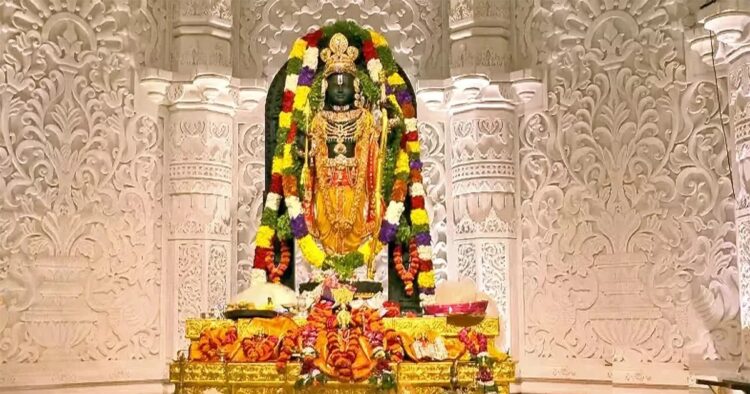In a historic event on Monday, the grand Ram temple witnessed the consecration of the new idol of Lord Ram, named “Balak Ram.” The ceremony, led by Prime Minister Narendra Modi, marked the beginning of a new era, with the old idol of Ram Lalla placed alongside the new one in the temple.
The decision to name the idol “Balak Ram” stems from its depiction of Lord Ram as a five-year-old boy in a standing posture. Arun Dixit, a priest involved in the consecration ceremony, expressed his overwhelming emotions, stating that the idol’s resemblance to a child brought tears to his eyes.
Priest Arun Dixit, who has conducted numerous consecrations, declared this event as the most divine and supreme in his experience. He had the first glimpse of the idol on January 18, and the consecration ceremony was broadcasted on television, allowing lakhs of people to witness the historic occasion from their homes and local temples.
The Shri Ram Janmabhoomi Teerth Kshetra revealed that extensive research and study of sacred texts, including the Adhyatma Ramayana, Valmiki Ramayana, Ramcharitmanas, and the Alavandar Stotram, guided the preparation of ornaments for the idol.
The 51-inch idol, crafted by Mysuru-based sculptor Arun Yogiraj, is chiselled from a three-billion-year-old rock known as Krishna Shile (black schist). This unique rock, excavated from Gujjegowdanapura at Jayapura Hobli in HD Kote Taluk of Mysuru, is ideal for sculptors due to its fine-to-medium-grained, sky-blue metamorphic nature.
Adorned in Banarasi fabric, the idol wears a yellow dhoti and a red ‘pataka’ or ‘angavastram.’ The ‘angavastram’ features pure gold ‘zari’ and threads with auspicious Vaishnav symbols such as ‘shankh,’ ‘padma,’ ‘chakra,’ and ‘mayur.’ The ornaments were crafted by Lucknow-based Harsahaimal Shiamlal Jewellers, and the garments were created by Delhi-based textile designer Manish Tripathi.
The grand ceremony, held just months before the Lok Sabha elections, captivated the audience, and the consecration of “Balak Ram” stands as a significant moment in the history of the Ram temple.

















Comments